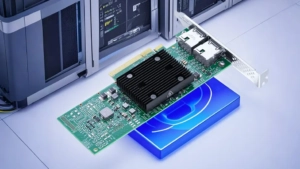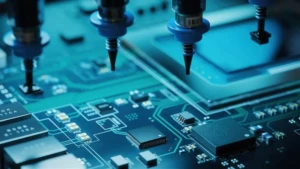In the world of precision engineering, the difference between excellence and failure can be measured in microns – there is a ubiquitous but so critical component that its performance determines the entire user experience. Welcome to the universe of high reliability haptic switches: from flawless tactile feedback from luxury smartwatches to the silent choreography behind responsive controls in custom car cockpits.
Accurate anatomy
At the heart of the haptic switch is an electromechanical device designed to complete or interrupt the circuit by physical drive. but High reliability Tactile switching goes beyond basic functions through the fusion of materials science, mechanical innovation and forced quality control. Unlike commodity switches, these components are designed to withstand extreme conditions while maintaining consistent performance over millions of cycles – a requirement that is not negotiable for applications that fail to choose from.
What is the difference between high reliability switches?
Three pillars define their advantages:
-
Material Alchemy
High reliability switches use special alloys such as beryllium copper or gold hook contact instead of standard phosphorus copper. These materials resist oxidation, reduce contact bounce and maintain stable electrical properties in corrosive environments. This package typically uses liquid crystal polymer (LCP) or PPS thermoplastics, which can withstand repeated sterilization, automotive fluids or salt sprays. -
Mechanical life engineering
While the standard switches may promise 100,000 cycles, high reliability variants are carried out through the following innovations that can torture over 5 million actions.- Even distribution of force
- Laser welding shell eliminates particles
- Tuning the haptic curve provides consistent feedback regardless of the driving angle
- Environmental perseverance
These switches have undergone a 21-stage verification kit including:- Thermal shock test (-55°C to +125°C)
- 85°C/85% humidity endurance
- IP68 diving certification
- MIL-STD-202 Vibration Resistance
The invisible hand of luxury technology
In elite applications, high reliability haptic switches are essential to run where they are:
-
High-end watch wearable devices
Swiss engineering smartwatch requires switches to run 10 atm of pressure during diving while providing jewellery-like click accuracy. The manufacturer specifies gold-plated contacts with 0.3N±0.05N drive force consistency to match mechanical clock tolerances. -
Car cocoon
In Bentley or Rolls-Royce Cabins, the switch behind the leather-style surface provides luminous feedback through 1.2mm stroke and uses an acoustic signature tuned to 45DB – a quiet confirmation that echoes the silent propulsion of the vehicle. -
Customized fashion technology
Designer wearables integrated temperature control or LED lighting rely on ultra-low (0.5mm stroke) switches weighing less than 0.2g. These components withstand dry cleaning solutions while maintaining drive consistency over 5% variance of 2 million pressures. - Aviation Command System
The helicopter cockpit switch operates at an altitude of 40,000 feet using a seal, and tactile feedback is detected through the flight gloves. Optimize the force curve to prevent accidental actuation during turbulence.
Longjing Advantages
The engineering of such components requires not only specifications—it requires the mastery of the organization. Our more than 400 R&D experts are dedicated to electric machinery innovation, and our approach involves:
1. Co-design partnerships
We embed engineers into the client design team in the early prototype stage to optimize switch parameters:
- Ergonomic curve that meets the threshold for ergonomic pressure sensitivity
- EMI/RFI shielding integrates sensitive medical/aerospace environments
- Customizable lighting (including bioluminescent markers)
2. Micro-batch agility
For limited edition products (such as 500 units of luxury equipment running), we maintain a $4 million niche material inventory enabled:
- Color PVD Paint Match Pantone Reference
- Custom actuator shape (diamond surface, ceramic inlay)
- Direct skin biocompatible shell contact medical equipment
3. Predictive fault analysis
Using vibration spectroscopy and contact resistance mapping, our lab simulated 10 years of life cycle wear in an accelerated 72-hour test. The failure probability model received by the customer fell to 0.001%.
Uncompromising economics
Although the cost of high reliability switching is 5-10 times higher than that of consumer-grade equivalents, its life cycle economy redefines value:
- Avoid failure costs: Single switch failure in industrial automation may trigger $500K+ downtime
- Brand equity protection: Luxury products require zero missing interaction
- Regulatory assurance: Medical/compliance certification requires component-level documentation
Beyond the horizon
The cutting edge of tomorrow is already in our prototype lab:
- Organic shape memory alloy: Self-healing contacts recover from 200% over-abuse
- Contactless haptic feedback: Hybrid design with optical signal transmission to provide physical actuation
- Bio-integrated circuits:Silk – Protein substrate embeds the switch into wearable fabric
In an era when human-computer interfaces become an expansion of personal identity, high-reliability tactile switches represent the intersection between engineering rigorous and sensory art. They transform utilitarian interactions into moments of intentional connection – whether it’s navigation of superyachts’ control arrays or haute couture dresses that adjust climate control.
Material age, adhesive fatigue, and even welded joints eventually surrender to entropy. But the pursuit of perfection continues – calibration time and time again. For those who demand unreasonable realization, the journey begins with the place where reliability goes beyond the normative table and becomes a place where tactile poetry is.








